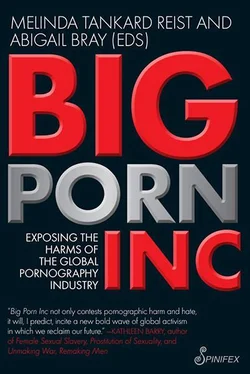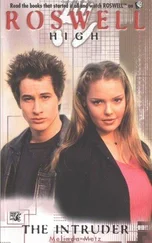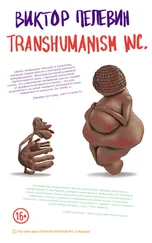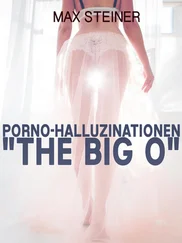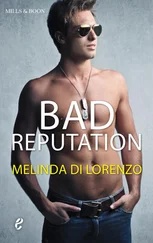However, against this background, attempts to bring Internet content into line with existing classification laws and the treatment of illegal material in Australia have met with virulent objection by vested interests. Requiring Internet Service Providers (ISPs) to filter out a blacklist of URLs containing extreme and violent pornography has been proposed by the current (Labor) Government. This material can be legally viewed in no other medium. As Australian author and Professor of Public Ethics, Clive Hamilton, has argued:
We live in a democracy where citizens ask their governments to impose restrictions on certain types of content that are regarded as harmful to individuals or to the community more broadly. We have a censorship system governing films, television and magazines, defined by law, enforced by government bodies and with widespread community support. There is nothing special about the Internet that puts it beyond community standards (Hamilton, 2009).
But those who demand a right to view ‘legal and illegal’ pornography protested against the filtering proposal. In February, 2010, Australia’s Parliament House and Federal Government Websites were shut down in a cyber-attack and inboxes of members of parliament were flooded with pornography (Davis, 2010). This sense of entitlement to ‘our pornography’ entails defending the ‘right’ of the pornography industry to market child rape, violation of women and girls, and female slavery to anonymous consumers, all in the name of freedom of speech. If we consider this ethically acceptable, whose rights are we defending?
The Swedish scholar, Max Waltman, has analysed the shielding of these kinds of abuses behind the screen of ‘free speech’. He details numerous cases where law makers, judges, and other arbiters dismiss claims against even some of the most violent pornography, or where those in breach of various laws in various countries are only given ‘penalties’, such as community service.
Waltman responds to the common refrain of pornography defenders to ‘avert your eyes’ or to ‘turn it off’ if you are offended by it. He points out that such a response assumes that the harm of a pornographic world is no more than ‘offensive’ to the observer:
Closing your eyes will not prevent women from being raped, battered, or tortured by intimate partners being inspired and impelled by pornography though. Nor will it help adolescent girls forced out on streets, coerced into imitating pornography upon thousands of clients’ requests, to escape the sexual abuse. Defining harm as an offence to observers silences and denies these women their rights (Waltman, 2009, p.12).
Like Waltman, our primary concern with pornography is not that it is offensive (although it often is), but that it is subordination and degradation – mostly of women. It is a human rights issue.
‘Capturing Men in a Wide Net’
The global pornography industry shows little concern for subordination, degradation or human rights violations; indeed powerful elements in the industry market the violation of human rights. Meanwhile Big Porn continues to devise new ways of catching men in a global and very sticky web. In her chapter ‘To catch a curious clicker’, Jennifer A. Johnson describes how the online porn industry captures men in a vast web:
Upon his arrival, he is entangled in a series of click manoeuvres and marketing gimmicks calculated to further reduce his agency and transform him from the ‘curious clicker’ into the ‘member clicker’ (p. 148)… men are drawn into the online commercial pornography network, where they find themselves enmeshed in a well constructed set of relationships designed to extract maximum profits through the circumscription of consumer choice. The structure of the network is designed to prevent ‘leavers’… by restricting and/or obfuscating (male) consumer choice (2010, p. 153).
It is remarkable that civil libertarians can see this level of manipulation into industrialised sex as something for freedom-loving people to celebrate.
Nothing radical about mass market masturbation
People on the ‘Left’ have opposed ‘Big Pharma’ and more recently ‘Big Food’ and ‘Big Society’, but many seem to fall silent in the face of ‘Big Porn’ and its predatory profit-driven practices. [19] 19 Gail Dines exposes the mainstream companies which benefit from pornography profits (see Dines, 2010, chapter 3). The porn profit trail is also a feature in the film Hardcore Porn Profits , http://www.youtube.com/watch?v=f3HSyLee74k .
Long-time US anti-porn campaigner, Nikki Craft, takes ‘progressive’ anti-globalisation campaigners to task for ignoring the global profit machine of Big Porn. [20] 20 See Nikki Craft, ‘ Hustling the Left ’, http://www.hustlingtheleft.com/index.html .
There is, however, nothing to be celebrated in the dehumanising global commodification of women in pornography. There is nothing revolutionary about mass-marketed masturbation. Radical big-picture thinking requires that we connect the global pornography industry to other social justice issues, in order to acknowledge the lack of justice in the reduction of human beings to objects of exchange.
Pornography today presents elements of every kind of barbarism imaginable – from overt fascist celebrations of racial hatred, to the killing of animals for sexual entertainment. And yet, for many people it still passes as ‘cool’, as just a bit of fun, as sexual ‘lulz’, something to emulate and celebrate. In the brave new world of pornochic, ethical boundaries are for wowsers and bores.
Contributors to Big Porn Inc
Our contributors are from diverse backgrounds and countries, with a range of views on social and ethical issues. But they are in broad agreement on the harms of pornography. We have divided Big Porn Inc into 5 Parts: Pornography Cultures, Pornography Industries, Harming Children, Pornography and the State, and lastly, a section on global activism, Resisting Big Porn Inc. [21] 21 The English language has a range of spelling conventions and this diversity is reflected in individual contributions.
Each Part opens with extracts from personal accounts shared with us during the writing of this book (and some sourced online) so that we remember that real people suffer real harm through pornography.
We begin the book with a personal reflection by Caroline (a pseudonym) who remembers the impact that finding her partner’s pornography had on their relationship. She captures the ordinariness and the normalisation of pornography in women’s lives as she states: “I’m the woman behind you in the supermarket queue.” In Part 2, Stella (a pseudonym) describes the destructive impact of dancing in a strip club and her grief that continues 12 years later. In Part 3, ‘Amy’ writes of how the abuse of pornography is re-experienced over and over. All 3 women voice the profound sense of loss, shame and humiliation they experienced in reflecting on how pornography touched their lives. But they also give voice to the courage to expose what happened to them – for the sake of others.
These contributions illustrate how pornography has become integrated into our cultural norms. In Part 1, Pornography Cultures, Gail Dines argues that Pseudo Child Pornography, in which girls over the age of 18 are represented as children, normalises and eroticises child abuse. Dines believes that this form of sexualisation weakens the norms that define children as off-limits to sexual use by men. Catharine A. MacKinnon writes about living in a world made by pornographers, and explores the many ways in which pornography has colonised our world, such that “[t]he cultural politics of pornography become normalised to the point of invisibility.” Maggie Hamilton focuses on how sexualised marketing targets children so they see pornography as a consumer good. Hamilton offers a passionate analysis of the ways in which children are sexually groomed, and in which childhood itself is controlled and defined by corporations.
Читать дальше
